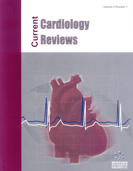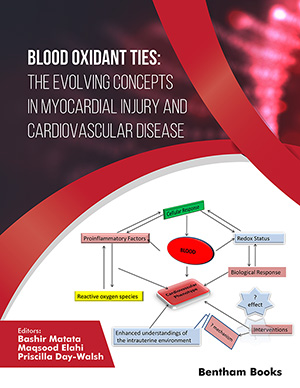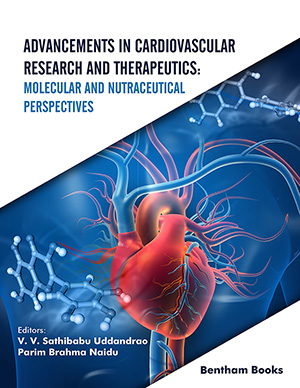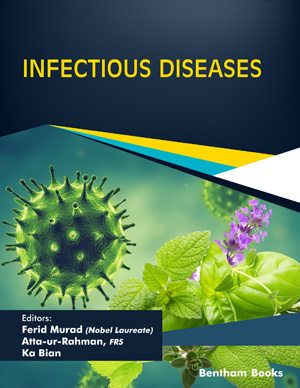Abstract
In-stent restenosis (ISR) is a recognized complication following percutaneous coronary intervention in which the luminal diameter is narrowed through neointimal hyperplasia and vessel remodeling. Although rates of ISR have decreased in most recent years owing to newer generation drug-eluting stents, thinner struts, and better intravascular imaging modalities, ISR remains a prevalent dilemma that proves to be challenging to manage. Several factors have been proposed to contribute to ISR formation, including mechanical stent characteristics, technical factors during the coronary intervention, and biological aspects of drug-eluting stents. Presentation of ISR can range from asymptomatic to late myocardial infarction and could be difficult to differentiate from acute thrombus formation. No definite guidelines are present on the management of ISR. In this review, we will discuss the mechanisms underlying ISR and provide insight into patient-related and procedural risk factors contributing to ISR, in addition to highlighting common treatment approaches utilized in the management of ISR.
Keywords: In-stent restenosis, drug-eluting stent, bare metal stent, DES-ISR, percutaneous coronary intervention, brachytherapy.
[http://dx.doi.org/10.1161/01.CIR.103.24.3019] [PMID: 11413094]
[http://dx.doi.org/10.1161/CIRCINTERVENTIONS.110.959882] [PMID: 21505166]
[http://dx.doi.org/10.1056/NEJM199408253310802] [PMID: 8041414]
[http://dx.doi.org/10.1056/NEJM199408253310801] [PMID: 8041413]
[http://dx.doi.org/10.1056/NEJMoa012843] [PMID: 12050336]
[http://dx.doi.org/10.1056/NEJMoa035071] [PMID: 14523139]
[http://dx.doi.org/10.1056/NEJMoa066633] [PMID: 17296825]
[http://dx.doi.org/10.1016/S0140-6736(09)62127-9] [PMID: 20060578]
[http://dx.doi.org/10.1161/hc3301.095285] [PMID: 11514368]
[http://dx.doi.org/10.1016/S0140-6736(07)60314-6] [PMID: 17321312]
[http://dx.doi.org/10.1016/j.jcmg.2017.09.008] [PMID: 29216976]
[http://dx.doi.org/10.1016/j.jcin.2015.07.023] [PMID: 26476609]
[http://dx.doi.org/10.1016/S0735-1097(01)01431-0] [PMID: 11527611]
[http://dx.doi.org/10.1016/j.jcin.2008.09.007] [PMID: 19463387]
[PMID: 16079441]
[http://dx.doi.org/10.1016/S0140-6736(03)14462-5] [PMID: 14550694]
[http://dx.doi.org/10.1016/j.jacc.2008.01.057] [PMID: 18498954]
[http://dx.doi.org/10.1002/ccd.21106] [PMID: 17580367]
[http://dx.doi.org/10.1016/j.amjcard.2006.07.023] [PMID: 17134626]
[http://dx.doi.org/10.1016/j.ahj.2006.12.009] [PMID: 17307411]
[http://dx.doi.org/10.1002/ccd.27473] [PMID: 29356269]
[http://dx.doi.org/10.1002/ccd.29221] [PMID: 32865328]
[http://dx.doi.org/10.15420/icr.2019.18.R1] [PMID: 31867065]
[http://dx.doi.org/10.1161/01.CIR.101.18.2165] [PMID: 10801757]
[http://dx.doi.org/10.1161/01.CIR.0000163587.36485.A7] [PMID: 15867193]
[http://dx.doi.org/10.1016/S0735-1097(10)80196-2] [PMID: 1993798]
[PMID: 1424051]
[http://dx.doi.org/10.1016/j.gendis.2015.02.003] [PMID: 28345015]
[http://dx.doi.org/10.1161/01.ATV.0000037100.44766.5B] [PMID: 12426203]
[PMID: 9857898]
[http://dx.doi.org/10.1016/S0167-5273(96)02844-6] [PMID: 9021425]
[http://dx.doi.org/10.1016/S0008-6363(98)00203-X] [PMID: 10325973]
[http://dx.doi.org/10.1016/S0002-9149(99)80409-3] [PMID: 7717277]
[http://dx.doi.org/10.1016/0735-1097(95)00249-4] [PMID: 7642865]
[http://dx.doi.org/10.15420/ecr.2018:8:2] [PMID: 30310472]
[http://dx.doi.org/10.1016/j.jacc.2010.07.028] [PMID: 21109112]
[http://dx.doi.org/10.2174/1568009033333754] [PMID: 12570657]
[http://dx.doi.org/10.1054/drup.2002.0227] [PMID: 12030785]
[http://dx.doi.org/10.1038/sj.bjc.6603353] [PMID: 16953237]
[http://dx.doi.org/10.1016/S0140-6736(00)03262-1] [PMID: 11130387]
[http://dx.doi.org/10.1016/j.jacc.2005.07.071] [PMID: 16386683]
[http://dx.doi.org/10.1161/hc3101.092214] [PMID: 11479260]
[http://dx.doi.org/10.1161/CIRCINTERVENTIONS.111.963215] [PMID: 22319069]
[http://dx.doi.org/10.1097/MD.0000000000017097] [PMID: 31517836]
[http://dx.doi.org/10.1093/eurheartj/ehv205] [PMID: 25994755]
[http://dx.doi.org/10.1016/j.jacc.2011.01.011] [PMID: 21376502]
[http://dx.doi.org/10.1016/j.jacc.2008.04.030] [PMID: 18652940]
[http://dx.doi.org/10.1038/nature00804] [PMID: 12066187]
[PMID: 17986721]
[http://dx.doi.org/10.1067/mhj.2001.119613] [PMID: 11717599]
[http://dx.doi.org/10.1093/eurheartj/ehv367] [PMID: 26242713]
[http://dx.doi.org/10.1053/euhj.1998.1012] [PMID: 9740343]
[http://dx.doi.org/10.1016/j.jacc.2018.09.013] [PMID: 30261237]
[http://dx.doi.org/10.1161/CIRCULATIONAHA.105.563403] [PMID: 16432073]
[http://dx.doi.org/10.1161/CIRCULATIONAHA.106.658237] [PMID: 17485593]
[http://dx.doi.org/10.1161/JAHA.113.000703] [PMID: 24650925]
[http://dx.doi.org/10.1016/j.jcin.2016.02.025] [PMID: 27009464]
[http://dx.doi.org/10.1002/ccd.21371] [PMID: 18360853]
[http://dx.doi.org/10.2174/1573403X10666140404105923] [PMID: 24720422]
[http://dx.doi.org/10.3346/jkms.2011.26.1.53] [PMID: 21218030]
[PMID: 21292601]
[http://dx.doi.org/10.1002/ccd.10709] [PMID: 14696169]
[http://dx.doi.org/10.1111/j.1540-8183.2010.00567.x] [PMID: 20806458]
[http://dx.doi.org/10.1016/j.hlc.2007.06.004] [PMID: 17728185]
[http://dx.doi.org/10.1016/j.ijcard.2007.02.033] [PMID: 17434616]
[PMID: 22477755]
[http://dx.doi.org/10.1161/CIRCULATIONAHA.104.512475] [PMID: 15927969]
[http://dx.doi.org/10.1161/01.CIR.0000160363.30639.37] [PMID: 15795325]
[http://dx.doi.org/10.1016/j.jacc.2007.02.059] [PMID: 17599600]
[http://dx.doi.org/10.1016/j.amjcard.2003.08.017] [PMID: 14636913]
[http://dx.doi.org/10.1016/j.pharmthera.2011.12.006] [PMID: 22212618]
[http://dx.doi.org/10.1007/s10439-017-1806-8] [PMID: 28160103]
[http://dx.doi.org/10.1001/jama.282.21.2035] [PMID: 10591386]
[http://dx.doi.org/10.1161/01.ATV.17.8.1512] [PMID: 9301628]
[http://dx.doi.org/10.1016/j.jcin.2010.08.018] [PMID: 21087755]
[http://dx.doi.org/10.1371/journal.pone.0072710] [PMID: 24066025]
[http://dx.doi.org/10.1097/MCA.0000000000000170] [PMID: 25211654]
[http://dx.doi.org/10.1161/CIRCIMAGING.112.976167] [PMID: 22798521]
[http://dx.doi.org/10.1016/j.jacl.2015.10.009] [PMID: 26892132]
[PMID: 29662507]
[http://dx.doi.org/10.1136/heartjnl-2013-304933] [PMID: 24270744]
[http://dx.doi.org/10.1186/1749-8090-5-91] [PMID: 20977758]
[http://dx.doi.org/10.1161/01.CIR.80.5.1190] [PMID: 2680158]
[http://dx.doi.org/10.1259/bjr/19829466] [PMID: 19325046]
[http://dx.doi.org/10.1016/j.carrev.2016.04.007] [PMID: 27215852]
[http://dx.doi.org/10.1016/j.ijcard.2008.01.042] [PMID: 18508141]
[http://dx.doi.org/10.1161/CIRCULATIONAHA.105.001149] [PMID: 16820618]
[http://dx.doi.org/10.1016/0735-1097(90)90533-U] [PMID: 2229749]
[http://dx.doi.org/10.1016/j.amjcard.2006.03.058] [PMID: 16950170]
[http://dx.doi.org/10.1097/MCA.0b013e3282cf4ba9] [PMID: 17700223]
[http://dx.doi.org/10.1161/JAHA.117.007212] [PMID: 29382666]
[http://dx.doi.org/10.1016/S0735-1097(02)02560-3] [PMID: 12475454]
[http://dx.doi.org/10.1161/01.CIR.0000041250.89627.A9] [PMID: 12473552]
[http://dx.doi.org/10.4244/EIJV5I6A119] [PMID: 20142225]
[http://dx.doi.org/10.1016/j.jacc.2014.06.1207] [PMID: 25443706]
[http://dx.doi.org/10.1002/clc.22908] [PMID: 29749621]
[http://dx.doi.org/10.1016/j.ccl.2019.07.012] [PMID: 31587788]
[http://dx.doi.org/10.1007/s12012-018-9499-2] [PMID: 30543051]
[http://dx.doi.org/10.1007/s10554-019-01533-9] [PMID: 30758691]
[http://dx.doi.org/10.1002/ccd.21109] [PMID: 17722039]
[http://dx.doi.org/10.1161/JAHA.115.001779] [PMID: 26150477]
[http://dx.doi.org/10.1016/j.mayocp.2016.06.029] [PMID: 27916154]
[http://dx.doi.org/10.1016/j.jtcvs.2016.07.044] [PMID: 27751237]
[PMID: 33196581]
[http://dx.doi.org/10.1093/eurheartj/ehy769] [PMID: 30500952]
[http://dx.doi.org/10.1016/S0735-1097(00)00584-2] [PMID: 10807462]
[http://dx.doi.org/10.1016/j.ahj.2005.08.011] [PMID: 16781233]
[PMID: 18688064]
[http://dx.doi.org/10.1253/circj.70.1026] [PMID: 16864936]
[http://dx.doi.org/10.1016/j.amjcard.2006.04.007] [PMID: 16950172]
[http://dx.doi.org/10.1016/j.amjcard.2007.05.033] [PMID: 17884372]
[http://dx.doi.org/10.1161/01.CIR.100.18.1872] [PMID: 10545431]
[http://dx.doi.org/10.1016/j.amjcard.2005.11.055] [PMID: 16635598]
[http://dx.doi.org/10.1111/j.1540-8183.2008.00414.x] [PMID: 18973502]
[http://dx.doi.org/10.1161/CIRCINTERVENTIONS.115.002778] [PMID: 26546577]
[http://dx.doi.org/10.1016/S0735-1097(03)00852-0] [PMID: 12957423]
[http://dx.doi.org/10.1136/bmj.h5392] [PMID: 26537292]
[http://dx.doi.org/10.1016/S0735-1097(01)01458-9] [PMID: 11527615]
[http://dx.doi.org/10.1002/1522-726X(200102)52:2<208:AID-CCD1049>3.0.CO;2-H] [PMID: 11170330]
[http://dx.doi.org/10.1161/CIRCINTERVENTIONS.118.007023] [PMID: 31345066]
[PMID: 33031640]
[PMID: 33531446]
[http://dx.doi.org/10.1016/j.amjcard.2008.09.107] [PMID: 19195508]
[http://dx.doi.org/10.4244/EIJV9I7A131] [PMID: 24280155]
[http://dx.doi.org/10.1016/j.amjcard.2006.06.027] [PMID: 17134625]
[http://dx.doi.org/10.3389/fcvm.2022.843734] [PMID: 36017094]
[http://dx.doi.org/10.1093/ejcts/ezy289] [PMID: 30165632]
[http://dx.doi.org/10.1016/j.jacc.2020.04.006] [PMID: 32466881]





















